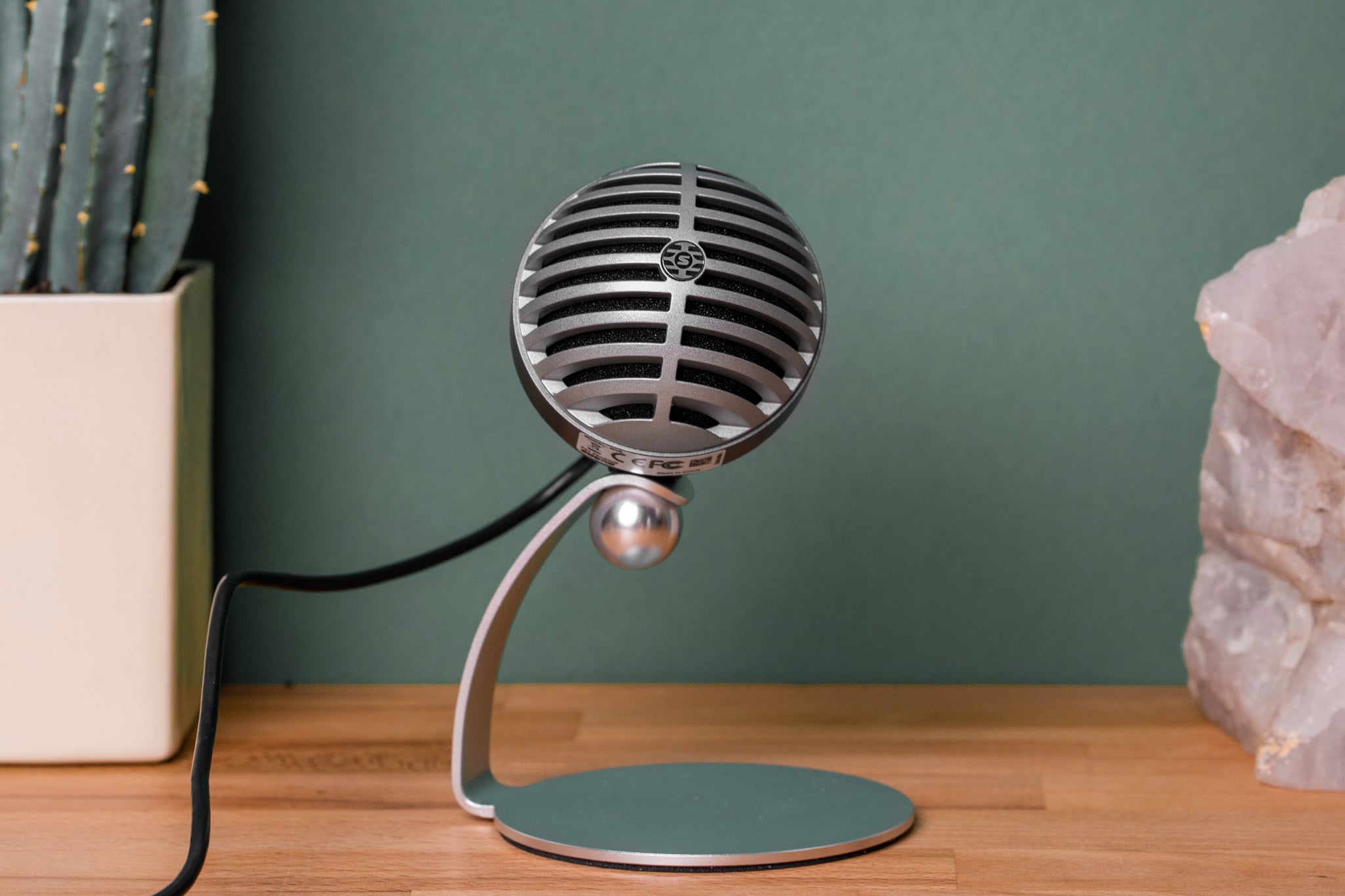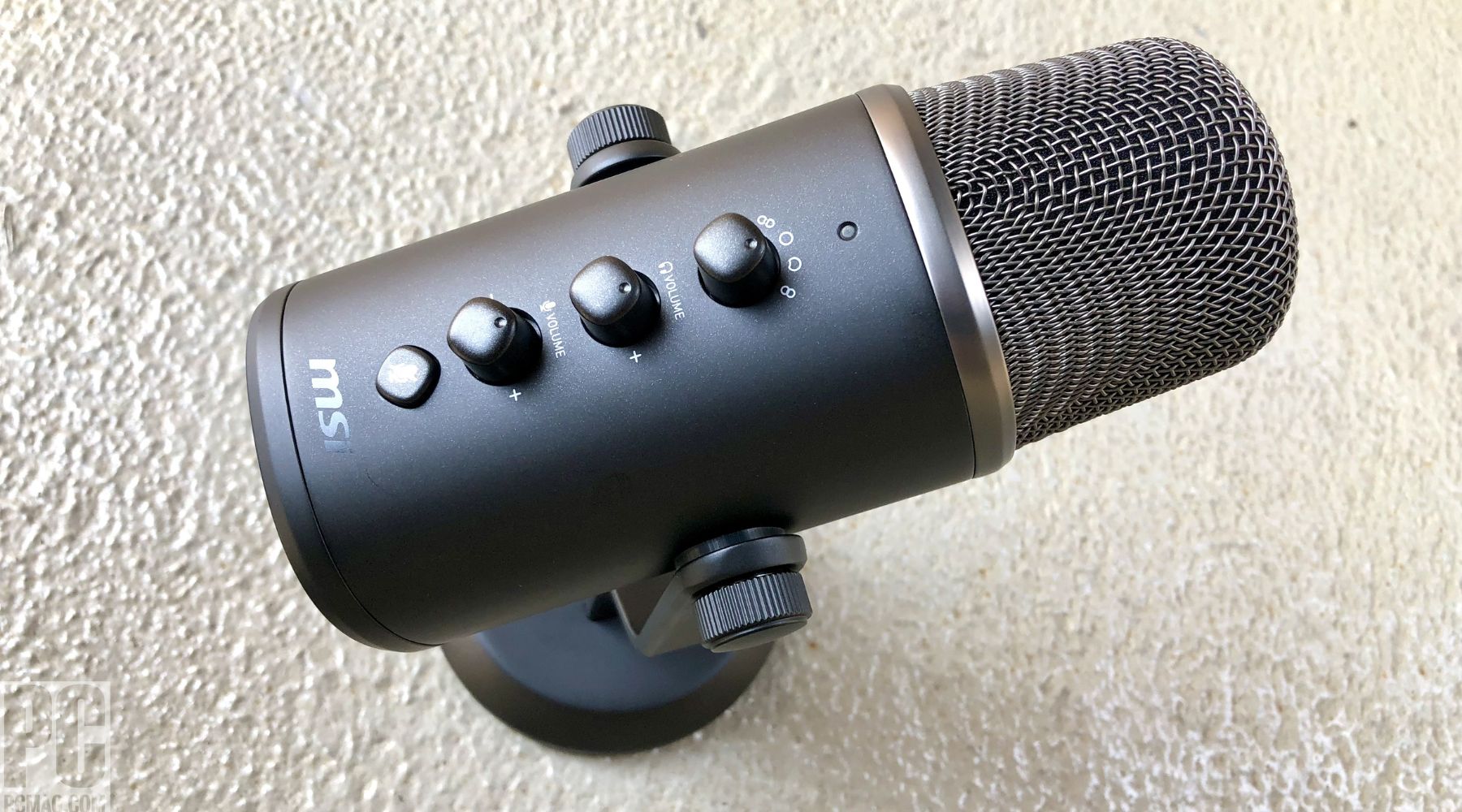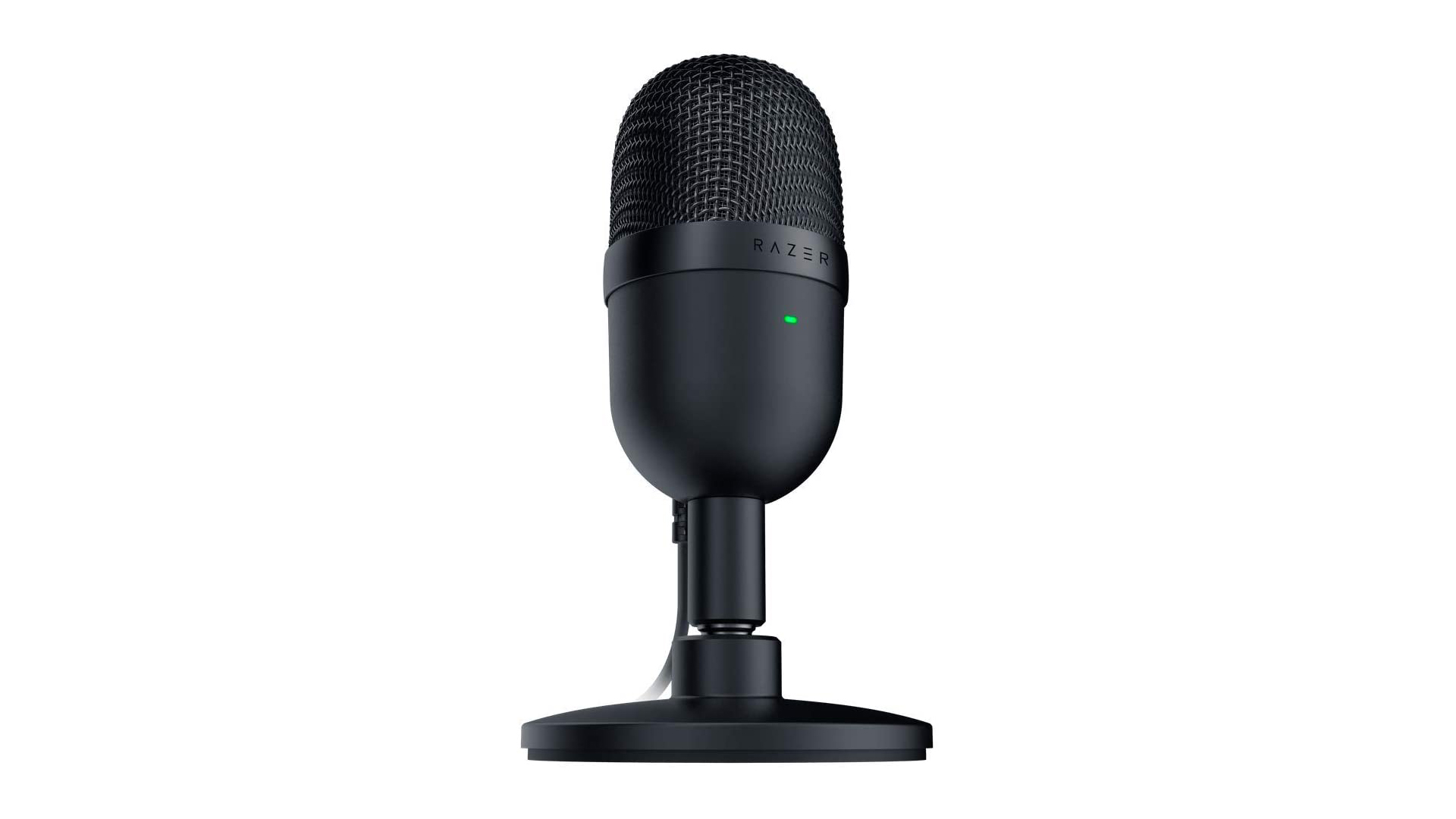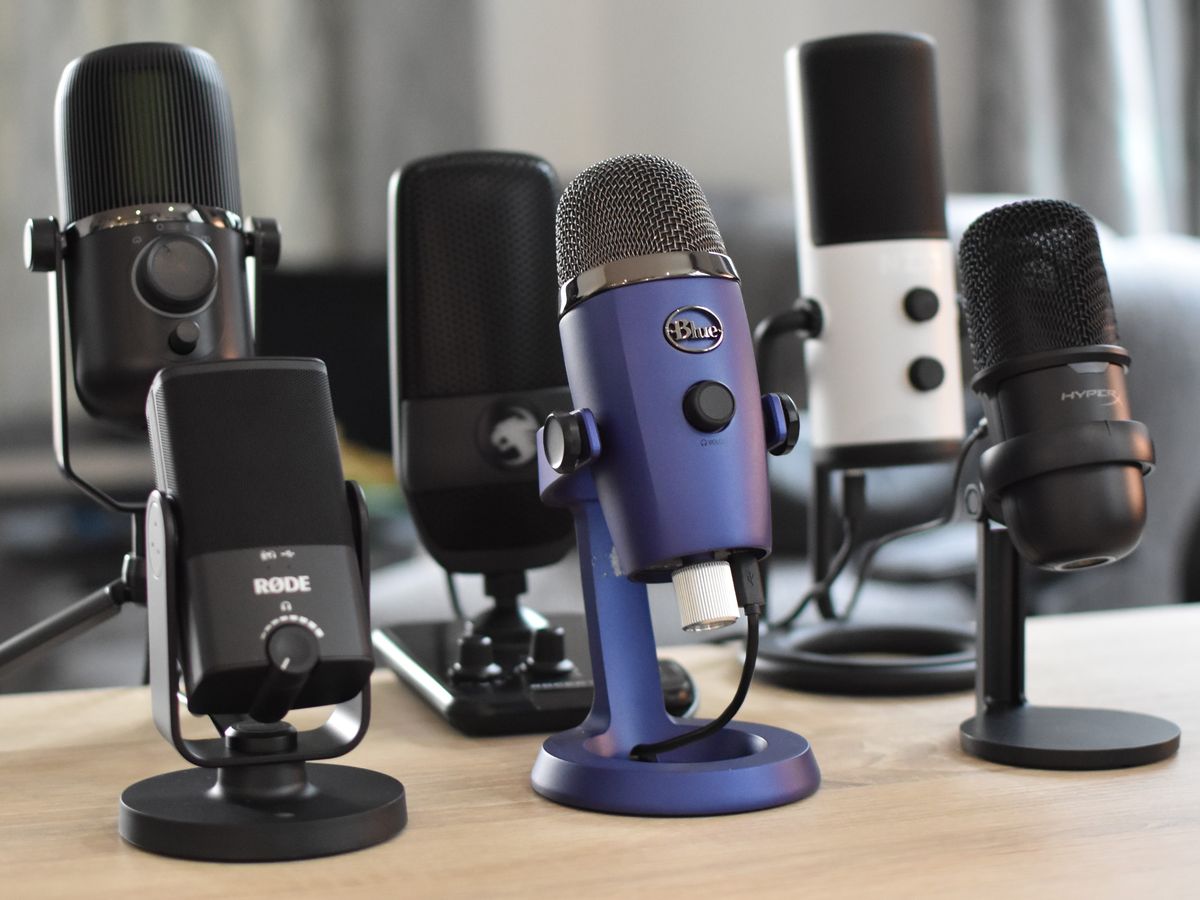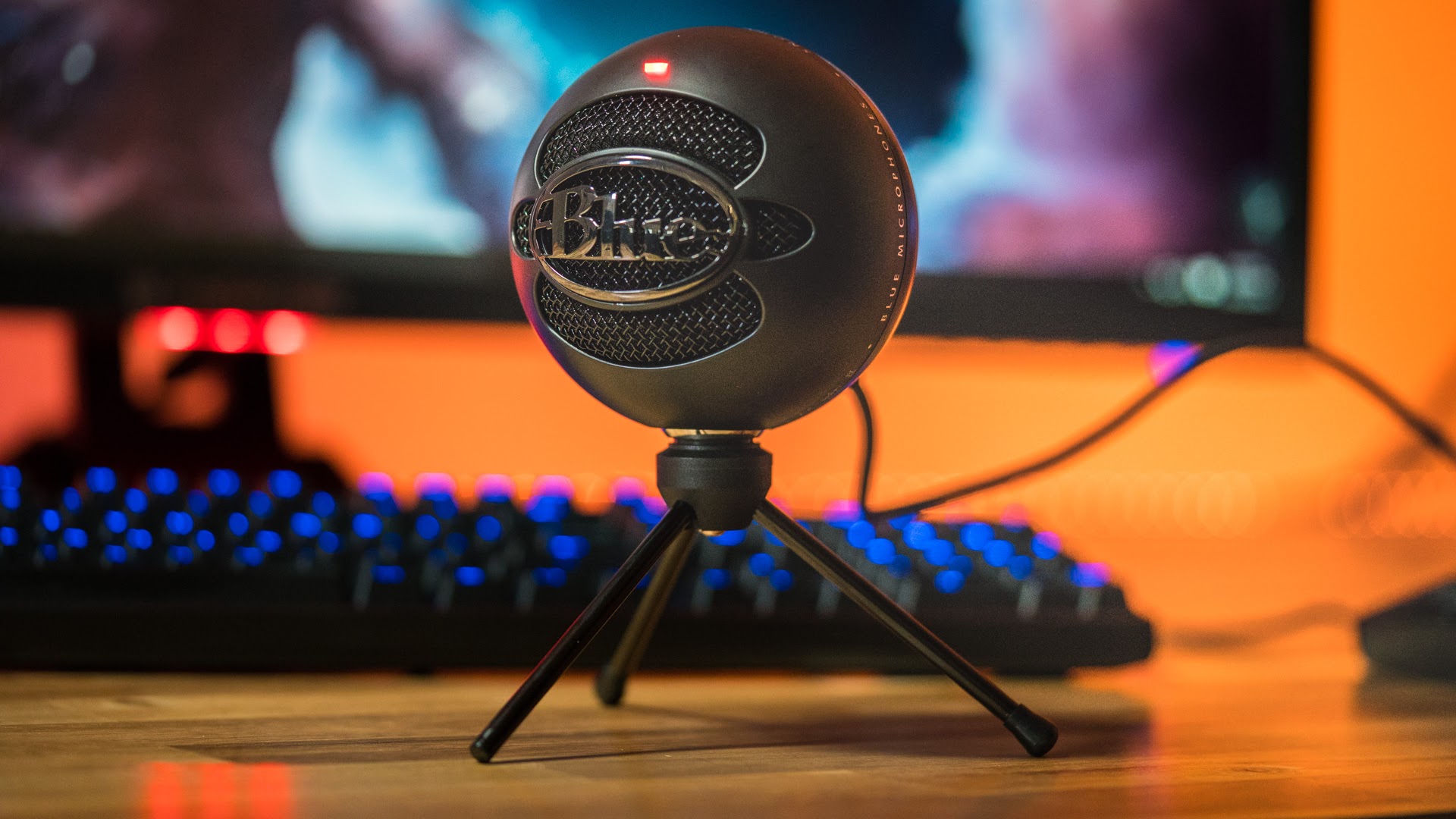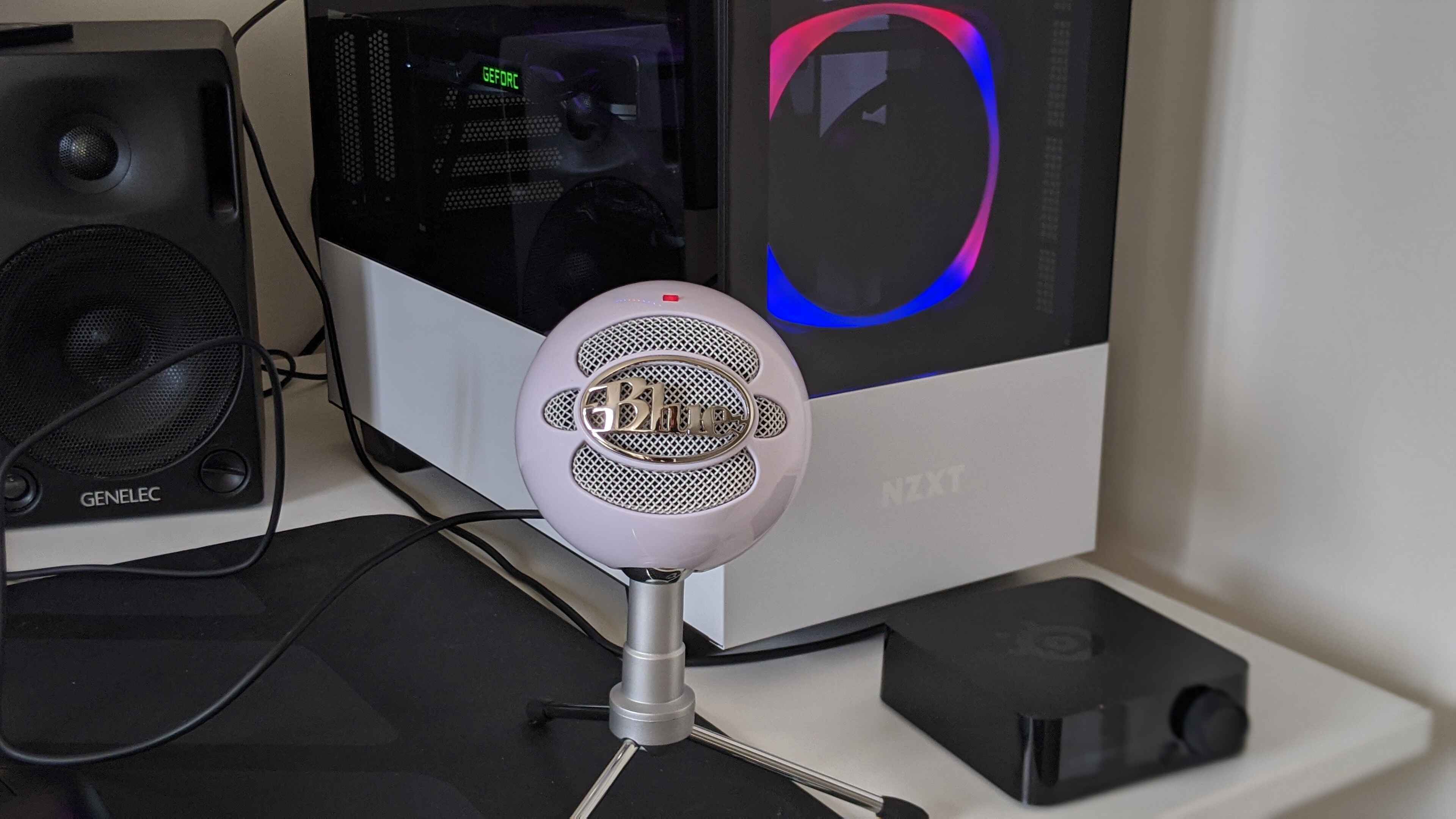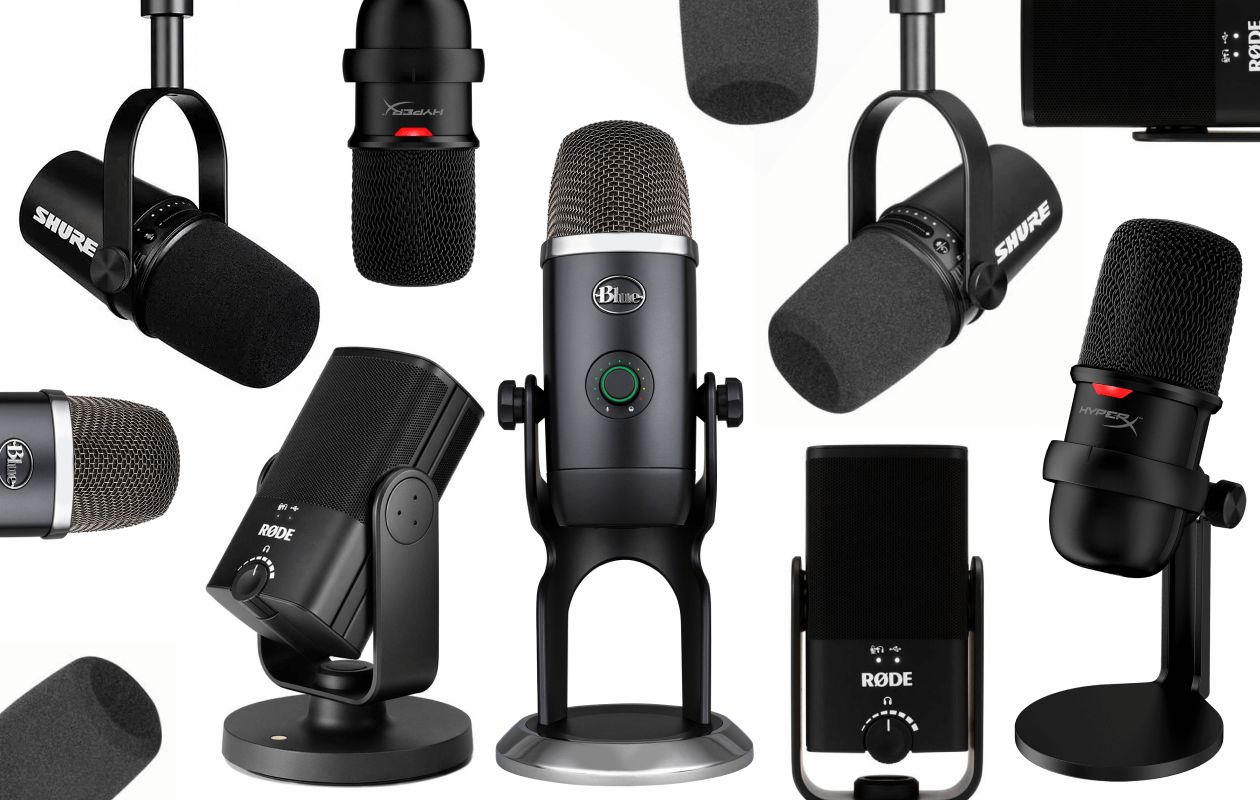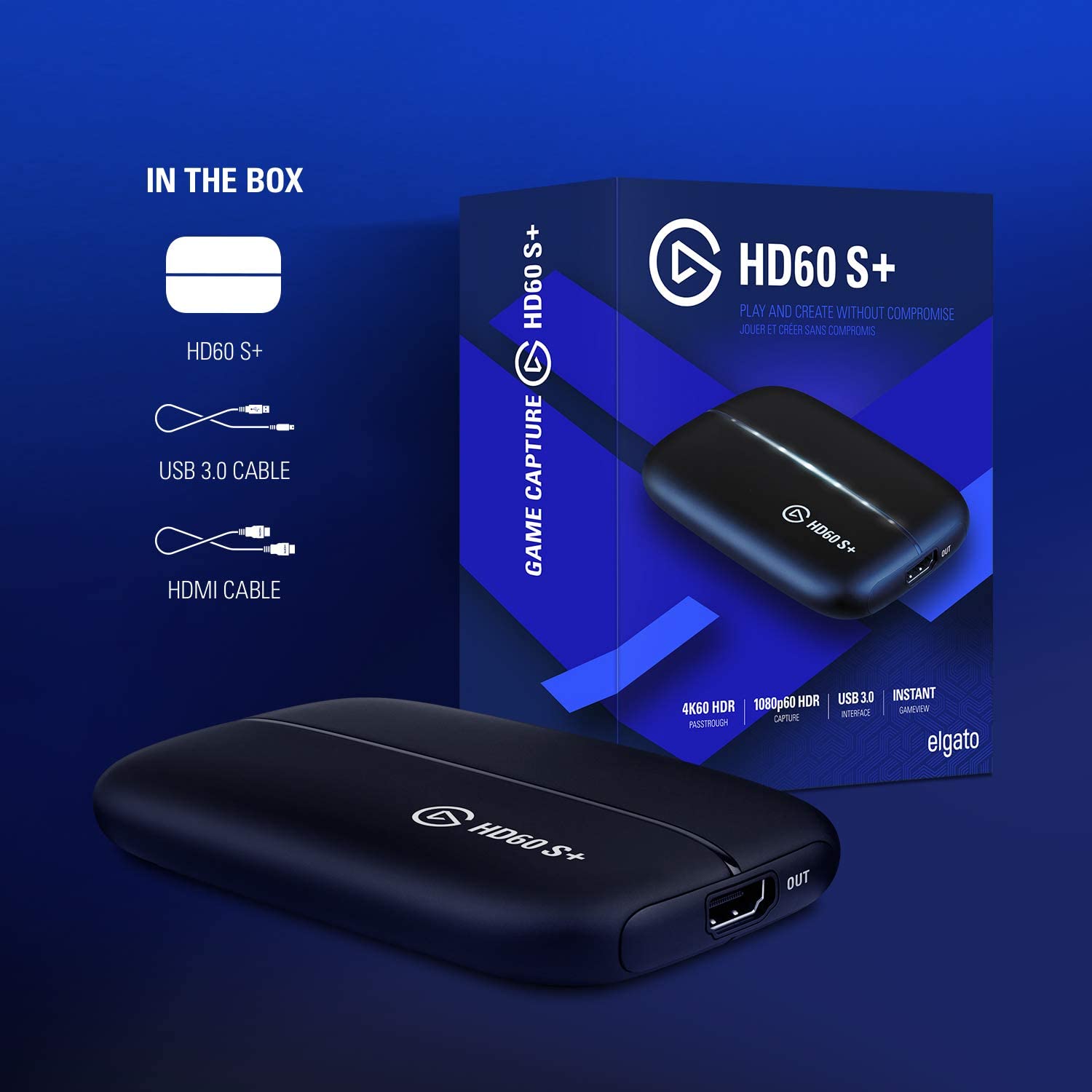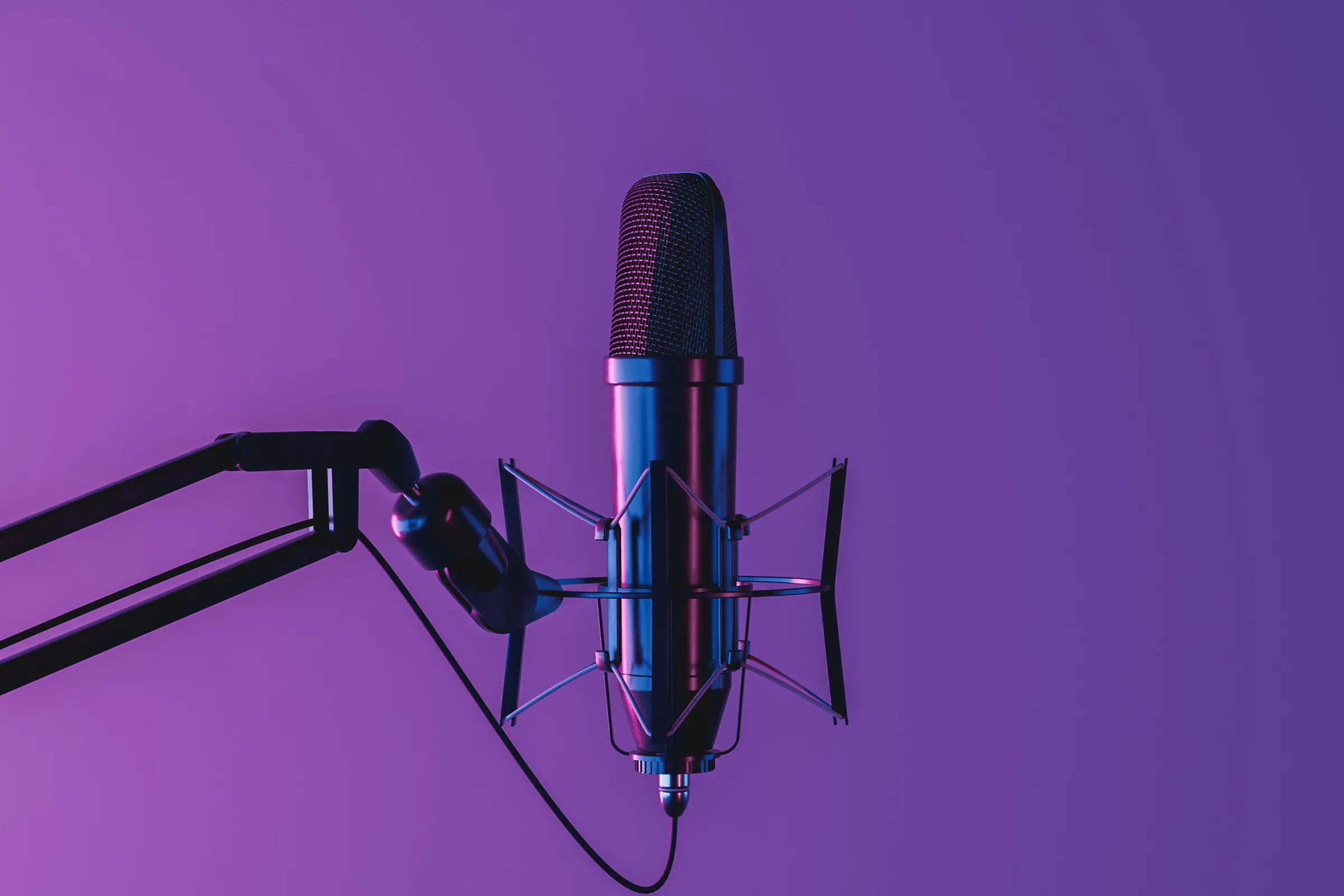Introduction
Are you frustrated by the annoying buzzing noise coming from your USB microphone, specifically the popular Blue Snowball model? Don’t worry, you’re not alone. Many users encounter this issue, and it can be a major hindrance when trying to record high-quality audio or participate in important online meetings.
The buzzing noise in USB microphones can be caused by various factors, from faulty connections to power interference. While it may seem like a daunting problem, there are effective steps you can take to minimize or even eliminate the buzzing noise so you can enjoy crystal-clear audio.
In this article, we will delve into the common causes of buzzing noise in USB microphones and provide you with practical tips to help you reduce or eliminate it. Whether you’re a podcaster, streamer, or remote worker, these solutions will come in handy and allow you to make the most out of your USB microphone.
Remember, it’s important to follow the troubleshooting steps in order to pinpoint the cause of the buzzing noise and find the appropriate solution. With a little patience and the right information, you’ll soon be able to enjoy a quiet and professional audio experience with your USB microphone.
Understanding the Buzzing Noise in USB Microphones
Before we delve into the solutions, it’s essential to understand the root causes behind the buzzing noise in USB microphones. This knowledge will help you troubleshoot the issue more effectively.
The buzzing noise is typically a result of interference in the signal path between the microphone and your computer. This interference can originate from various sources, such as electrical interference, grounding issues, software conflicts, or even hardware problems. Identifying the cause will guide you towards the most appropriate solution for your specific case.
One common source of buzzing noise is electrical interference. This can be caused by nearby electrical devices, cables, or even poor power management within your computer. Grounding issues can also contribute to the buzzing noise. If your USB microphone is not properly grounded, it can pick up unwanted electrical signals and manifest as a buzzing sound.
Software conflicts can also play a role in the buzzing noise. In some cases, outdated or incompatible drivers or conflicting audio settings can disrupt the microphone’s signal and introduce the buzzing noise. Additionally, hardware problems, such as faulty connectors or internal components, can contribute to the issue.
By understanding these potential causes, you can approach the troubleshooting process with a targeted mindset. Each solution we will discuss is designed to address a specific cause of buzzing noise. So, let’s dive into the tips and techniques that will help you reduce or eliminate the buzzing noise in your USB microphone.
Common Causes of Buzzing Noise in USB Microphones
The buzzing noise in USB microphones can occur due to various reasons. Understanding these common causes will enable you to identify the source of the problem and apply the appropriate solution. Let’s explore the most frequent culprits behind the buzzing noise:
- Electrical Interference: Electrical interference is a primary cause of buzzing noise. It can be caused by nearby electrical devices, power cables, or improper grounding. These external sources can introduce unwanted signals into the microphone’s circuit, resulting in the buzzing sound.
- Software Issues: Outdated or incompatible audio drivers, conflicting software settings, or audio processing effects can also contribute to buzzing noise. In some cases, the microphone may not be recognized properly by the operating system, leading to distorted audio or buzzing noise.
- Hardware Problems: Defective connectors, faulty cables, or internal component issues within the USB microphone can cause buzzing noise. Physical damage or wear and tear over time can result in poor signal quality, leading to unwanted noise.
- Background Noise: Ambient background noise, such as fans, air conditioners, or nearby conversations, can interfere with the microphone’s recording and amplify the buzzing noise. Minimizing environmental factors can help address this issue.
- USB Port Compatibility: Some USB ports may not provide sufficient power or may have compatibility issues with the USB microphone. This can result in inadequate power supply, causing buzzing noise or intermittent connectivity.
By identifying the potential causes, you can narrow down the troubleshooting process and focus on the specific solutions. The next section will provide you with practical tips to reduce or eliminate the buzzing noise in your USB microphone, depending on the underlying cause.
Tips to Reduce the Buzzing Noise in Your USB Microphone
Dealing with buzzing noise in your USB microphone can be frustrating, but there are several effective steps you can take to minimize or eliminate the issue. Here are some practical tips that can help reduce the buzzing noise:
- Check the USB Connection and Cable: Ensure that the USB connection between the microphone and your computer is secure. If you notice any loose connections, try using a different USB cable or port to rule out any issues with the cable itself.
- Eliminate Power Interference: Keep your USB microphone away from other electronic devices that may generate electrical interference. If possible, use a separate power outlet or a power conditioner to provide clean power to your microphone.
- Adjust the Microphone’s Volume and Gain: Sometimes, high microphone volume levels or excessive gain can introduce buzzing noise. Try reducing the microphone volume and gain settings to see if it helps decrease the unwanted noise.
- Use a Pop Filter or Windshield: A pop filter or windshield can significantly reduce plosive sounds and wind noise, which can contribute to buzzing. These accessories act as a barrier between your mouth and the microphone, resulting in cleaner audio.
- Update Your Drivers and Software: Regularly check for driver updates for your USB microphone and ensure that your audio software is up to date. Installing the latest versions can resolve compatibility issues and potentially reduce the buzzing noise.
- Try a Different USB Port: If you’re experiencing buzzing noise, try connecting your USB microphone to a different USB port on your computer. Some USB ports may have better power delivery or improved compatibility, which can help alleviate the issue.
- Minimize Background Noise: Reduce any background noise in your recording environment. Close windows, turn off fans, and try to minimize any sources of ambient noise. This will decrease the chances of picking up unwanted noise in your microphone.
- Check for Hardware Issues: Inspect your USB microphone for any visible damage, loose connections, or faulty components. If you suspect a hardware issue, consider contacting the manufacturer for further assistance or considering a repair or replacement.
By implementing these tips, you can significantly improve the audio quality of your USB microphone and reduce or eliminate the buzzing noise. Remember to experiment with different solutions to find the one that best suits your specific situation. With a little patience and troubleshooting, you can enjoy a crisp and clear audio experience with your USB microphone.
Check the USB Connection and Cable
A loose or faulty USB connection or cable can often be the culprit behind buzzing noise in your USB microphone. It’s important to start troubleshooting by examining the USB connection and cable. Here are steps to follow:
- Ensure a Secure Connection: Verify that the USB cable is properly plugged into both the USB port on your computer and the USB port on your microphone. Make sure the connection is secure and free from any wiggling or looseness.
- Inspect the USB Cable: Examine the USB cable for any visible signs of damage, such as frayed wires or bent connectors. If you notice any issues, try using a different USB cable to determine if the original cable is causing the buzzing noise.
- Try Different USB Ports: If you have multiple USB ports on your computer, test each port to see if the buzzing noise persists. Sometimes, certain USB ports may provide a better power supply or have improved compatibility, resulting in reduced buzzing noise.
- Check for USB Hub Usage: If you are using a USB hub to connect your microphone, try connecting it directly to your computer’s USB port instead. USB hubs can sometimes introduce electrical interference, leading to buzzing noise.
- Consider a USB Extender Cable: If your USB microphone cable is too short and requires an extension, make sure to use a high-quality USB extender cable. Poor-quality or longer cables can result in signal loss or degradation, which may contribute to buzzing noise.
By thoroughly checking the USB connection and cable, you can eliminate any potential issues related to poor connections or faulty cables. If the buzzing noise persists even after ensuring a proper connection, it’s time to move on to the next troubleshooting step.
Eliminate Power Interference
Power interference can be a major culprit behind buzzing noise in your USB microphone. Electrical devices and poor power management can introduce unwanted signals into the microphone’s circuit, resulting in a buzzing sound. Follow these steps to minimize power interference:
- Separate USB Microphone from Electrical Devices: Keep your USB microphone away from other electrical devices, such as monitors, routers, speakers, or power strips. These devices can generate electrical interference, which can be picked up by your microphone and manifest as buzzing noise. Physically separating your microphone from these devices can help reduce interference.
- Use a Separate Power Outlet: Plug your computer and USB microphone into separate power outlets, preferably on different circuits. This can help reduce electrical interference and prevent noise from being introduced into the microphone’s signal path.
- Consider a Power Conditioner: If you’re experiencing significant power-related issues, investing in a power conditioner may be beneficial. A power conditioner regulates and filters the incoming power, reducing the chances of electrical interference and providing cleaner power to your USB microphone.
- Turn off unnecessary electrical devices: Temporarily turn off any unnecessary electrical devices in your recording environment to minimize electrical interference. This includes devices like fluorescent lights, air conditioners, refrigerators, or any other equipment that may cause electromagnetic interference.
- Use Shielded Cables: Replace your USB cable with a shielded cable. Shielded cables are designed to reduce electromagnetic interference by using a conductive shield to block external signals from affecting the microphone’s signal. This can help minimize buzzing noise caused by power interference.
Taking these steps will help reduce the impact of power interference on your USB microphone. However, if the buzzing noise persists, it’s important to move on to the next troubleshooting technique to resolve the issue.
Adjust the Microphone’s Volume and Gain
High microphone volume levels or excessive gain settings can introduce buzzing noise in your USB microphone. Adjusting the microphone’s volume and gain can help minimize or eliminate this issue. Follow these steps to make the necessary adjustments:
- Check the Microphone’s Volume Control: Locate the volume control on your USB microphone, if it has one. Ensure that the volume is not set too high, as this can result in distorted audio and buzzing noise. Gradually decrease the volume and listen for any improvements in the audio quality.
- Adjust the Gain Settings: If your USB microphone has gain control, adjust it to an optimal level. Setting the gain too high can amplify unwanted noise and cause buzzing. Gradually decrease the gain setting until you achieve a balance between a clear audio signal and minimal background noise.
- Use Software Control: If your USB microphone requires software control for adjusting volume and gain, access the software interface and make the necessary adjustments. Experiment with different settings and listen to the output to find the ideal balance between volume, gain, and background noise reduction.
- Test with Different Recording Software: In some cases, the buzzing noise may be a result of software conflicts. Try using a different recording software or app to see if the issue persists. Switching to a different software can sometimes resolve compatibility issues and provide a cleaner audio signal.
By adjusting the microphone’s volume and gain settings, you can improve the audio quality and reduce buzzing noise. Remember to make incremental adjustments and test the audio output after each change to find the optimal settings for your USB microphone. If the buzzing noise persists, proceed to the next troubleshooting step.
Use a Pop Filter or Windshield
A common cause of buzzing noise in USB microphones is plosive sounds and wind noise, which can be particularly prominent when pronouncing certain consonant sounds like “p” or “b”. Using a pop filter or windshield can help minimize these noises and reduce the buzzing effect. Here’s how you can effectively use them:
- Attach a Pop Filter: A pop filter is a mesh screen that is positioned between your mouth and the microphone. It acts as a barrier that prevents plosive sounds from directly hitting the microphone’s diaphragm, reducing the chances of buzzing noise. Attach the pop filter to a microphone stand or arm, ensuring it is positioned about two to three inches away from the microphone.
- Consider a Foam Windshield: A foam windshield is a protective layer that fits over the microphone capsule. It helps minimize wind noise and can also act as a secondary barrier against plosive sounds. Foam windshields are particularly useful in outdoor recordings or environments where air movement may cause unwanted noise. Check if your USB microphone comes with a foam windshield or consider purchasing one separately.
- Speak Slightly to the Side: Another technique to reduce plosive sounds and the resulting buzzing noise is to speak slightly to the side of the microphone. This helps redirect the airflow from plosive sounds away from the microphone’s capsule, thus minimizing their impact on the audio signal.
- Practice Proper Mic Technique: Develop good microphone technique by maintaining a consistent distance from the microphone and speaking in a controlled manner. Experiment with different microphone positions to find the optimal distance and angle that reduces plosive sounds and buzzing noise.
Using a pop filter or windshield can significantly reduce unwanted plosive sounds and wind noise, resulting in cleaner audio with less buzzing noise. Experiment with these accessories and microphone techniques to find the setup that works best for your specific needs. If the buzzing noise persists, continue to the next troubleshooting step.
Update Your Drivers and Software
Outdated or incompatible drivers and software can lead to buzzing noise in your USB microphone. Ensuring that you have the latest updates for your drivers and software can resolve compatibility issues and improve the overall performance of your microphone. Follow these steps to update your drivers and software:
- Check the Manufacturer’s Website: Visit the manufacturer’s website of your USB microphone and look for any available driver updates. Download and install the latest drivers specifically designed for your microphone model and operating system.
- Use Device Manager (Windows): On Windows, you can update USB microphone drivers through Device Manager. Right-click on the Start button, select Device Manager, and expand the “Audio inputs and outputs” or “Sound, video, and game controllers” category. Right-click on your USB microphone, select “Update driver,” and follow the on-screen instructions to install any available updates.
- Software Updates: Check if there are any updates available for the recording or audio software you are using. Visit the software developer’s website or check for software updates within the software itself. Installing the latest software updates can address any compatibility issues and improve the overall performance of your USB microphone.
- Uninstall Conflicting Software: If the buzzing noise persists after updating the drivers and software, it’s possible that conflicting audio software is causing the issue. Uninstall any unnecessary or unused audio software that may be conflicting with your USB microphone. Restart your computer after the uninstallation process is complete.
Updating your drivers and software is an important step to ensure optimal performance and reduce buzzing noise. By staying current with the latest updates, you can address compatibility issues and improve the overall functionality of your USB microphone. If the buzzing noise persists despite updating the drivers and software, proceed to the next troubleshooting step.
Try a Different USB Port
If you’re still experiencing buzzing noise in your USB microphone, it’s worth trying a different USB port on your computer. Some USB ports may provide better power delivery or improved compatibility, which can help reduce buzzing noise. Follow these steps:
- Identify Available USB Ports: Take note of the available USB ports on your computer. You may have USB ports on both the front and back of your computer, as well as on external devices like monitors or keyboards.
- Disconnect the USB Microphone: Unplug your USB microphone from the current USB port and wait for a few seconds before proceeding.
- Try a Different USB Port: Plug your USB microphone into a different USB port on your computer. It’s recommended to choose a USB port directly connected to your motherboard if possible, as these ports often provide better power supply and stability.
- Monitor for Changes: After connecting the USB microphone to the new USB port, monitor the audio quality for any improvements. If the buzzing noise is significantly reduced or eliminated, it indicates that the previous port may have been causing the issue.
- Test Multiple USB Ports: If there are multiple available USB ports, test the microphone in each one to determine if one provides a better overall experience with reduced buzzing noise. This will help you identify the most compatible port for your USB microphone.
By trying different USB ports, you can eliminate the possibility of the buzzing noise being caused by a specific port’s compatibility or power delivery limitations. If the buzzing noise persists despite changing USB ports, proceed to the next troubleshooting step to address other potential causes.
Minimize Background Noise
Background noise can interfere with the recording quality of your USB microphone and contribute to the buzzing noise. To ensure clear and crisp audio, it’s important to minimize as much background noise as possible. Follow these steps to reduce background noise:
- Choose a Quiet Environment: Select a quiet location for recording to minimize ambient noise. Avoid areas with high levels of external noise, such as traffic, air conditioning units, or crowded spaces.
- Close Windows and Doors: Close windows and doors to minimize external sounds from entering your recording space. This can help reduce unwanted background noise that may contribute to the buzzing noise.
- Use Soundproofing Materials: If your recording space has excessive echo or unwanted reverberation, consider using soundproofing materials to absorb and minimize reflections. This can improve the overall sound quality and reduce the impact of background noise.
- Speak Closer to the Microphone: Speaking closer to the microphone can help capture your voice more clearly and minimize the need to increase the microphone’s gain, which can amplify background noise and buzzing. Experiment with microphone positioning to find the optimal distance that reduces the impact of background noise.
- Use Headphones: Wearing headphones while recording can help you monitor and adjust the microphone’s position and audio levels more effectively. By blocking out external sounds, you can focus on capturing clean audio without being distracted by background noise.
- Consider Noise Reduction Software: If background noise is still an issue, you can use noise reduction software during post-processing to further minimize unwanted noise. These software tools analyze the audio and remove or reduce specific frequencies associated with background noise.
Reducing background noise is crucial for achieving professional audio quality with your USB microphone. By implementing these techniques, you can minimize distractions and improve the overall clarity of your recordings or live sessions. If the buzzing noise persists despite minimizing background noise, proceed to the next troubleshooting step.
Check for Hardware Issues
If you’ve tried all the previous troubleshooting steps and the buzzing noise in your USB microphone still persists, it’s time to investigate for potential hardware issues. Certain hardware problems within the microphone itself can contribute to the unwanted buzzing noise. Follow these steps to check for hardware issues:
- Inspect the USB Microphone: Carefully examine your USB microphone for any visible signs of damage or wear. Look for loose connections, bent pins, or physical defects that may affect the microphone’s performance.
- Try the Microphone on a Different Computer: Connect your USB microphone to another computer and test it. If the buzzing noise persists across different devices, it indicates that the issue lies with the microphone itself rather than your computer. Consider contacting the manufacturer or seeking professional assistance for repair or replacement options.
- Test with Another USB Microphone: If possible, borrow or test another USB microphone on your computer to determine if the buzzing noise occurs with a different microphone. If the buzzing noise is absent with the alternate microphone, it further confirms that the issue lies with your original USB microphone.
- Contact Customer Support: If your USB microphone is under warranty or within the designated support period, reach out to the manufacturer’s customer support for further assistance. They can provide specific troubleshooting guidance or facilitate a repair or replacement, if necessary.
Checking for hardware issues is crucial to identifying and resolving any underlying problems within your USB microphone. If it is determined that the issue is a hardware malfunction, follow the appropriate steps to repair or replace the microphone to ensure optimal audio quality for your future recordings or online sessions.
Conclusion
Dealing with buzzing noise in your USB microphone, such as the popular Blue Snowball model, can be frustrating. However, with the right troubleshooting techniques, you can minimize or eliminate the issue and enjoy clear and professional audio. Throughout this guide, we’ve explored various tips to reduce buzzing noise in USB microphones:
- Checking the USB connection and cable
- Eliminating power interference
- Adjusting the microphone’s volume and gain
- Using a pop filter or windshield
- Updating drivers and software
- Trying a different USB port
- Minimizing background noise
- Checking for hardware issues
By following these steps and experimenting with different solutions, you can identify the specific cause of buzzing noise in your USB microphone and apply the appropriate fix. Remember to be patient and methodical in your troubleshooting process to achieve the best results.
If you’ve exhausted all the troubleshooting techniques and the buzzing noise persists, consider reaching out to the manufacturer’s customer support for further guidance. They have the expertise to provide specific assistance and ensure that your USB microphone is functioning optimally.
With a little persistence and the right approach, you can overcome the buzzing noise and enjoy high-quality audio recordings, online meetings, podcasts, and more. Don’t let the buzzing noise hold you back – take control of your USB microphone and experience the crystal-clear sound you desire!







